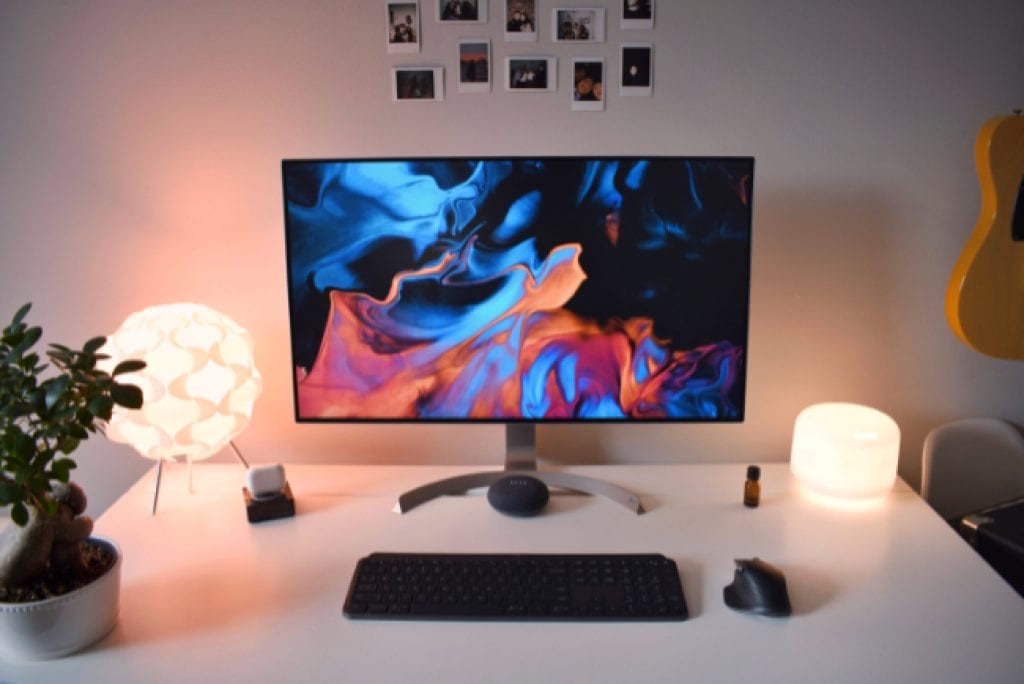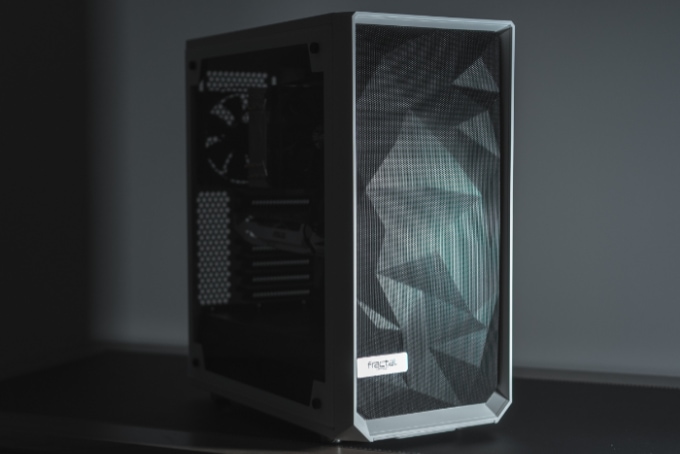A Guide to Hiding Computer Wires: No More Tangles

Cable clutter is an all-too-familiar sight in our technology-filled lives. Whether it's your home office, gaming station, or just the corner where you charge all your devices, a jumble of wires can be both an eyesore and a nuisance.
However, this doesn't have to be the case. Proper cable management is not just a practical solution for this issue but also an essential element of a well-organized, efficient, and aesthetically pleasing space.
Understanding the importance of cable management can indeed be the first step towards a neater, safer, and more productive workspace. It reduces the risk of accidents, improves device performance, and creates a tidy and inviting environment.
This blog post will explore in detail how you can hide and organize computer wires effectively to achieve a cleaner, more professional look for your workspace.
The Essentials of Cable Management
Before you can begin to organize your cables, it's crucial to understand what each wire is for. Start by disconnecting and identifying each cable.
Typically, you will find power cords, HDMI cables, Ethernet cables, USB cables, and possibly audio cables in a standard setup. Take note of their function, destination, and origin, and use labels or colored tape to distinguish them if necessary.
Importance of Planning Cable Routes
A well-thought-out plan for your cable routes can save you from potential mishaps down the line. Carefully consider the positioning of your computer, peripherals, power sources, and the best paths for your cables.
Keep in mind that your plan should aim for the shortest, most direct routes, while avoiding sharp bends and tangles.
Brief Introduction to Cable Management Tools
To organize your cables effectively, you'll need the right tools for the job. These can range from simple cable ties and clips to more sophisticated cable sleeves, trays, and concealment solutions.
Each of these tools serves a specific purpose in cable management:
- Cable Ties: These are used to bundle your wires together, making them easier to handle and less likely to tangle.
- Cable Clips: These help in routing your cables along specific paths, ensuring they stay in place.
- Cable Sleeves: Sleeves can encapsulate several wires at once, bundling them into a single, manageable unit, and providing a cleaner look.
- Cable Trays: Trays are handy for managing a large number of cables, guiding them under desks or along walls.
Detailed Guide on How to Hide Computer Wires
Optimal cable management begins with how you arrange your computer and peripheral devices.
Positioning Your Computer Close to Outlets
One of the most effective ways to minimize visible wires is to place your computer close to power outlets. This allows you to use the shortest possible cables, reducing the amount of cable that needs to be managed.
Using a Desk with Built-in Cable Management
If possible, opt for a desk that offers built-in cable management features. This could be anything from simple holes in the desktop for cable routing to fully-fledged cable trays and cord holders underneath.
Making Use of Cable Management Tools
Next, put your cable management tools to good use. Each tool has a specific purpose and can greatly enhance the neatness and functionality of your setup.
Cable Clips
Cable clips can secure your cables along the desired path, ensuring they stay in place without tangling or hanging loosely.
Cable Ties
Use cable ties to gather multiple cables together, especially if they're heading in the same direction. This simplifies your cable path and reduces visual clutter.
Cable Sleeves
Sleeves are excellent for bundling multiple cables into one larger, easily manageable cable. They also add a uniform, clean appearance to your setup.
Cable Trays
Use cable trays to neatly tuck away large bunches of cables, typically under your desk or along a wall. They keep cables organized and out of sight.
Routing Cables Behind Furniture
Use the existing furniture to your advantage when hiding cables.
Under the Desk Routing
Running cables under your desk rather than across it helps keep them hidden. Use adhesive clips, ties, or under-desk trays to hold them in place.
Along the Wall Routing
If cables must extend across the room, run them along the baseboards or corner where the wall meets the floor. Cable covers can conceal them, blend them into the wall, or even make them a part of the room's decor.
Using Decor to Conceal Cables
Incorporate your cables into your room's decor, or use decor to hide them entirely.
Creative Ways to Use Home Decor for Hiding Cables
Cable concealers, which come in various designs, can be painted to match your wall, or you could use stylish wire baskets or cable boxes that match your room's theme. Even certain plants can serve as natural concealers for your cables.
Choosing the Right Decor for Your Space
When choosing decor to hide or disguise your cables, ensure it matches your room's overall aesthetic. Remember, the goal is to make the cables less noticeable, not to draw attention to them.
Professional Cable Management Solutions

While the aforementioned strategies provide a do-it-yourself approach to cable management, there are professional services and solutions you can turn to if the task seems overwhelming or if you prefer a more sophisticated setup.
Hiring a Professional Cable Management Service
Professional cable management services specialize in creating clean, organized, and efficient cabling solutions. They're especially useful for complex setups, large offices, or when you need to manage cables in multiple rooms.
What to Expect
These professionals can assess your space, propose an optimal cable route, and implement it with precision. They are well-versed in a variety of cable management tools and techniques and can offer custom solutions tailored to your specific needs.
Choosing a Service
When choosing a professional service, consider their experience, customer reviews, and whether they specialize in residential or commercial spaces. Make sure to discuss your specific needs and expectations beforehand.
In-wall Cable Management Systems
If aesthetics are a top priority and you don't mind a more invasive procedure, in-wall cable management systems are a solution worth considering. These systems conceal your cables entirely by routing them through the walls, providing a clean, wire-free look.
Benefits
The main benefit of an in-wall system is that it completely hides your cables from view. It's an especially popular choice for home theaters or gaming rooms, where visible cables can detract from the overall aesthetic.
Considerations
Bear in mind that installing an in-wall system can be quite complex and will usually require professional installation. Also, remember that it might not be a feasible option for renters or those who prefer a less permanent solution.
Customized Furniture with Built-in Cable Management
Custom furniture with built-in cable management features is another professional solution that can significantly improve your setup's look and functionality.
Features
Such furniture might include desks with built-in cable trays, cable holes, and other cord concealment features. There are also entertainment centers and TV stands designed with cable management in mind.
Choosing the Right Piece
When shopping for furniture, look for pieces that match your decor, fit your space, and offer the cable management features that meet your needs. Take the time to assess the furniture's quality and the effectiveness of its built-in cable management system.
With these professional solutions, you can achieve a highly sophisticated, clean, and organized space, free from visible wires. While they may require more of an investment, the enhanced aesthetic and functional benefits can be well worth it for many.
How to Maintain Your Cable Management System
Properly managing your cables is not a one-time task but rather an ongoing process that requires regular maintenance. Here are some strategies to help you maintain your cable management system effectively.
Regularly Checking for Damaged Wires or Connectors
Over time, cables can become damaged due to wear and tear, potentially causing safety hazards or device malfunctions. Regularly inspect your cables for any signs of damage, such as fraying, bent connectors, or exposed wires.
Replace any damaged cables promptly to avoid potential issues.
Retagging and Reorganizing When Adding New Devices
Whenever you add a new device to your setup, you'll likely need to introduce new cables and possibly rearrange existing ones. Use this opportunity to reassess your cable management system. Ensure the new wires are properly labeled and routed, and reorganize existing cables if necessary.
Cleaning Your Cable Management System
Dust and dirt can accumulate on and around your cables over time, especially if they're located near the floor. Make a habit of regularly cleaning your cables and cable management tools.
A simple dusting or wipe-down can help keep your setup looking neat and can also prevent dust-related damage to your equipment.
By regularly checking your cables, adjusting your system when adding new devices, and cleaning your cables and tools, you can maintain an efficient and aesthetically pleasing cable management system.
Remember, the key to successful cable management is consistency and attention to detail. Even the best cable management setup can fall into disarray without proper maintenance.
Benefits of Effective Cable Management
A well-implemented and maintained cable management system can yield a multitude of benefits beyond mere aesthetics. Here are the key advantages you can enjoy when you manage your computer wires effectively.
Improved Safety
Loose and tangled cables can pose safety risks, such as tripping hazards and the potential for electrical fires due to damaged wires. By organizing and concealing your cables properly, you significantly reduce these risks, creating a safer environment for yourself and others.
Better Device Performance
Proper cable management can also have a positive impact on the performance of your devices. For instance, neatly organized and untangled cables can improve ventilation, which in turn prevents overheating and enhances the performance and lifespan of your equipment.
Enhanced Aesthetics
Arguably one of the most noticeable benefits of cable management is the visual improvement. A workspace free from cable clutter looks neater, more professional, and inviting. It's not only pleasing to the eye but can also boost your mood and productivity.
Ease of Maintenance and Troubleshooting
An organized cable system makes it easier to identify and access specific cables when you need to replace, troubleshoot, or add new devices. It saves time and eliminates the frustration of untangling and figuring out which cable belongs to which device.
Prevention of Cable Damage
Properly managed cables are less likely to get damaged. When cables are tangled or loosely hanging, they can undergo unnecessary stress, leading to wear and tear. Cable management helps ensure each cable is correctly routed and secured, which reduces the chance of damage.
By investing some time and effort into managing your cables, you can enjoy these extensive benefits that will not only improve the visual appeal of your workspace but also enhance safety, device performance, and ease of maintenance. It's a testament to how an often overlooked aspect of our digital lives can have significant practical implications.


